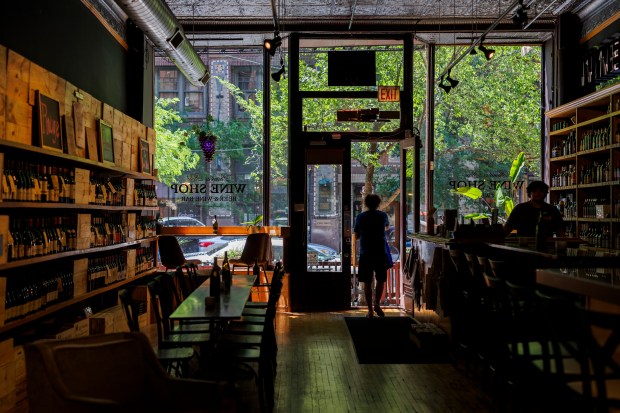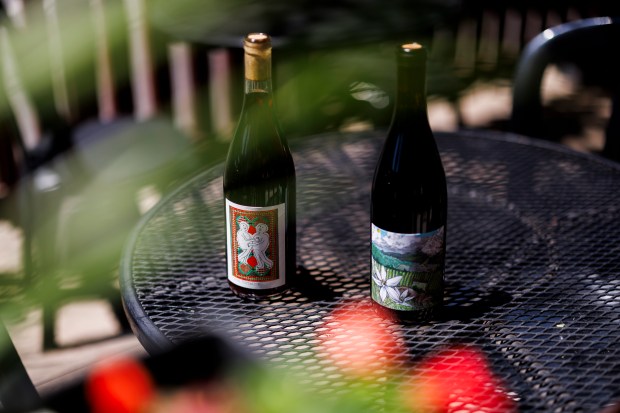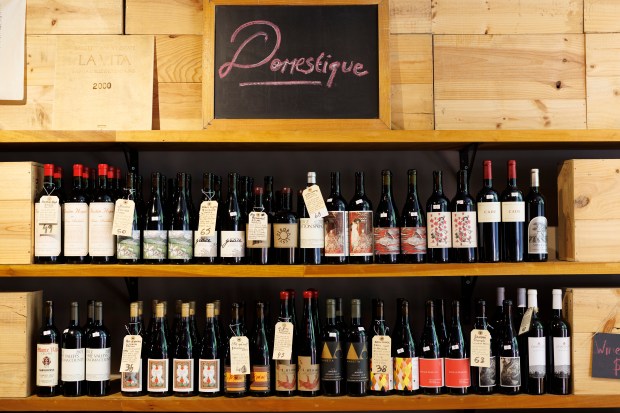Earlier this year, winemaker Patrick Cappiello of Monte Rio Cellars, a small producer of wines from Lodi and Mendocino in California, made a dramatic plea in an Instagram post to his 37,000 followers.
“American wineries are struggling right now,” he said. “We have a huge amount of inventory and a huge decrease in sales… Drink our wines, buy our wines,” Cappiello implored, challenging his followers to “buy only American wine for two months.” Because otherwise, many American wineries you love will go out of business, he warned.
Cappiello’s appeal sparked widespread discussion in an industry facing a glut of global production coupled with sharp downward trends in consumption. Globally, wine consumption has decreased by 13% in 2023 from peak figures in 2007. And in the U.S., where the number of wineries has increased 4% annually since 2010 to over 11,000 wineries in 2022, wine sales have faltered as increasingly health-conscious consumers are drinking less alcohol, or seeking alternatives to wine like spirits, cannabis or premade canned cocktails.
Cappiello’s message struck an alarm for the dire situation of many small American wineries, but it also sparked concern about whether “Buy American” as an ethos makes sense when it comes to wine.
Wine, unlike most consumer goods, is uniquely celebrated for its diversity — the vast, kaleidoscopic landscape of regions, grapes and styles associated with it. “The magic of wine is the ability to expand people’s horizons with stories of all the different places and people that produce it,” explains Isabella Tenorio, the head sommelier for RPM Restaurants, a restaurant group with multiple restaurant concepts throughout Chicago, Las Vegas and Washington, D.C. Narrowing the scope with a directive to buy American hits differently than it does with appliances or automobiles, she suggests.
Polls indicate that Americans generally prefer to buy American-made products. Beyond patriotism, buying American — whether a Ford F-150 pickup or a Whirlpool washer — implies quality or longevity for many consumers. For many, that feel-good sense of supporting homegrown products and local communities appeals.
“If you look at U.S. wine consumption, the vast majority of what Americans consume is, in fact, domestic wine,” explains winemaker Nova Cadamatre, a Master of Wine and owner of the wine brands Trestle Thirty One in the Finger Lakes region of New York and Fiadh Ruadh in Napa. After all, imported wine comprises just 30% of the U.S. wine market by volume.
But among the many challenges that small American producers like Cappiello or Cadamatre share is that the wines they craft are inherently more expensive to produce than the wines American consumers purchase most often. About 73% of wines in the U.S. market are sold for under $8 — the kind of cut-rate, often generic wines that only corporations large enough to maximize massive economies of scale can deliver.
Certainly, in Chicago’s many steakhouses, premium American wines, especially California reds dominate offerings. “Our top-selling wines at RPM Steak are American, specifically California cabernet, and in all of the RPM restaurants, within the top five there are usually two Americans, usually a cabernet and a chardonnay,” Tenorio says.
But for small producers making wine outside marquee regions like Napa (where the average sales price for a bottle now exceeds $100), decreased wine consumption is exacerbated by the proliferation of high quality, inexpensive imported wines, as well as the influence of wine professionals who often favor European imports.
“There’s absolutely a bias towards European wines,” says Lee Gusman, the wine director at Printers Row Wine Shop, describing the preferences of American distributors, buyers and sommeliers who funnel wines to end consumers.
It’s a bias that stems from a multitude of sources. Traditional wine education has long centered on European wines. And particularly among wine pros, preferences for high-acid, mineral-driven wines with moderate alcohol content associated with Europe have endured.
It’s a bias that Gusman has been guilty of too, he admits, so much that American wines represent just 15% of sales at Printers Row. “Wines from European countries like France and Italy are so culturally revered,” he explains. They’re so deeply intertwined with history and culture, he suggests, “those chateaus and rolling hills where generations have stewarded the same land… It’s just sexier,” he said laughingly.
As a directive, “Buy American” would be a tough sell for shops like Printers Row where consumers demand both diversity and discovery when purchasing wines. But Gusman does agree that greater recognition is due, particularly to the many American winemakers who “are redefining the landscape of what American wine can be today.”
“There’s a wonderful irreverence here unlike anything in Europe, a distinctly American spirit of discovery that can make our wines really fun and adventurous, sometimes weird and unexpected too,” he says.

Unfortunately, “many of America’s most phenomenal wines are simply not making it into the hands of consumers,” says Grant Barnow, the wine director at The Oakville Grill & Cellar in Fulton Market. Oakville is one of few restaurants in the Chicago area that serve only American wine, more specifically, from California. Beyond the big brands or famous appellations, “we wanted to celebrate the depth and breadth of wine available in California,” says Barrow, “phenomenal wines from smaller growers and wineries that are often tiny in production.”
It’s compelling as a single restaurant concept, but even Barnow doesn’t think ‘Buy American’ is a good take on wine in general. By focusing on exclusion rather than exploration and discovery, “you lose out on the beauty of wine, this gorgeous celebration of the global tradition of winemaking,” explains Barnow.
“It’s definitely a tough market,” particularly for small wineries in America today, says Cadamatre. And in its purest form, supporting American wine “takes advantage of the things you have locally, and encourages money to stay in local economies,” she says. “The value of supporting small domestic wine producers is that every bottle sold makes a really huge difference in our lives, it puts food on my table, it goes directly back into my business,” she says.
As an industry though, Cadamatre feels “the bigger war at hand isn’t domestic versus imported wine,” but rather, restoring consumer interest in wines overall, “coming together to convince consumers that wine in moderation is part of a healthy lifestyle again.”
In the meantime, it’s never been a better time to drink American wines, if only for the sheer pleasure and discovery of doing so.
Monte Rio Cellars 2023 Lodi Sauvignon Blanc $24 at Monte Rio Cellars
Cappiello produces an innovative array of California wines, from uniquely fresh-fruited zinfandel sourced from centenary vines in Lodi to a cherry-stained mission, a grape introduced to California by Catholic missionaries in the 18th century. This salt-edged sauvignon blanc made from organically farmed grapes is an exceptional value likely to outperform Sancerre sold at double the price.
Bergstrom 2021 Cumberland Reserve Willamette Pinot Noir $43 at Vin Chicago
“Oregon is a really beautiful bridge between Old World and New World styles,” Tenorio says, adding “It’s always my top choice for domestic wines, especially for pinot noir and chardonnay… Bergstrom, especially, makes a beautiful pinot noir that has a little bit more ripeness and oak than Burgundy would, but that’s mineral-driven and judiciously made.”
Stolpman Vineyards 2021 Ballard Canyon Syrah $33 at Uncork It! Liquor Store
While “Santa Barbara is a distinctly cool-climate region in the Central Coast of California, if you go a bit farther inland into Ballard Canyon or the Happy Canyon, you get wonderful syrah that’s very much of the Northern Rhône style,” Tenorio says. “Stolpman Vineyards, particularly, makes a lovely syrah” with richness and ripeness calibrated with vitality and freshness.
Trestle Thirty One 2022 Finger Lakes Chardonnay $38 at Trestle Thirty One
“Anyone who’s a die-hard white Burgundy fan would love our chardonnay,” Cadamatre says of this supple but briskly balanced wine sourced from Seneca Lake in New York’s Finger Lakes region. “It’s an amazing value for the quality compared to what you’re getting from Burgundy,” she says.
Rasa Vineyards 2019 Veritas Sequitur Walla Walla Syrah $135 at Rasa Vineyards
“If you’re a Northern Rhône drinker, you need to go drink Washington syrah,” Cadamatre suggests. “The best examples share a concentration and intensity that really do rival the Rhône.” Her favorite is produced by fellow Master of Wine Billo Naravane, owner and winemaker at Rasa Vineyards in Walla Walla.

Martha Stoumen 2022 Post Flirtation California Red $36 at Printers Row Wine Shop
Sonoma-based winemaker Martha Stoumen makes “exceptional wines that are super approachable, fun and energetic,” Gusman says. This bright, juicy blend of zinfandel, pinot noir, carignan and petite syrah sourced from Mendocino and Contra Costa County explodes with “super high-toned fresh fruit,” he says.
Kelley Fox 2022 Mirabai Dundee Hills Pinot Noir $45 at Printers Row Wine Shop
“I get so excited about wines from Oregon and Kelley Fox is a really beautiful spirit making the most amazing wines,” Gusman says. “Pinot noir from the Willamette Valley is distinctly American in that they’re more prominent, more powerful in taste, but there’s an elegance and energy to these wines.”
Matthiasson 2022 California Rosé $34 at Verve Wine
For Barnow, winemakers Jill and Steve Matthiasson represent not only a unique take on Northern California wine, but “their importance to sustainable viticulture is bar none. … Their rosé is racy, mineral and citrus-driven, and maybe the best accompaniment to a summer day,” he says.
Tatomer 2022 Steinhügel Santa Lucia Highlands Riesling $22 at In Fine Spirits
Graham Tatomer does incredible work translating “Austrian stylizations of riesling and grüner veltliner,” Barnow says. “I’m a sucker for acid and Graham’s wines always leave me craving more.”
Whitcraft 2019 Sanford & Benedict Vineyards Sta. Rita Hills Pinot Noir $74 at Independent Spirits
Drake Whitcraft’s perfumed, bright-fruited pinot noir offers glimpses of Burgundy but remains firmly set in Santa Barbara, suggests Barnow. “Set in traditions of low-intervention winemaking, (Whitcraft) is the ferryman guiding wines to their gorgeous, elegant destinations,” he says.
Anna Lee Iijima is a freelance writer.




